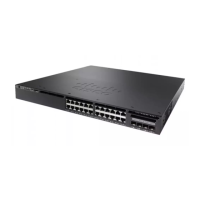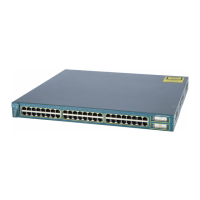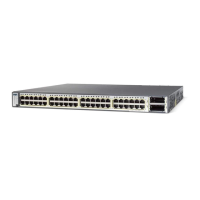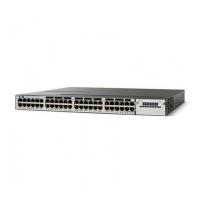PurposeCommand or Action
VLAN, the IGMP static group, and physical interface. For a configuration
example, see Example: Interface Configuration as an SVI, on page 83
These interfaces must have IP addresses assigned to them.
Enables a PIM mode on the interface.ip pim {dense-mode | sparse-mode |
sparse-dense-mode}
Step 5
By default, no mode is configured.
Example:
Device(config-if)# ip pim
The keywords have these meanings:
• dense-mode—Enables dense mode of operation.
sparse-dense-mode
• sparse-mode—Enables sparse mode of operation. If you configure sparse
mode, you must also configure an RP.
• sparse-dense-mode—Causes the interface to be treated in the mode in
which the group belongs. Sparse-dense mode is the recommended setting.
• state-refresh—PM dense mode state-refresh configuration.
Returns to privileged EXEC mode.end
Example:
Device(config-if)# end
Step 6
Verifies your entries.show running-config
Example:
Device# show running-config
Step 7
(Optional) Saves your entries in the configuration file.copy running-config startup-config
Example:
Device# copy running-config
Step 8
startup-config
Related Topics
Cisco’s Implementation of IP Multicast Routing, on page 252
Configuring IP Multicast Forwarding (CLI)
You can use the following procedure to configure IPv4 Multicast Forwarding Information Base (MFIB)
interrupt-level IP multicast forwarding of incoming packets or outgoing packets on the device.
IP Multicast Routing Configuration Guide, Cisco IOS XE Release 3SE (Catalyst 3650 Switches)
258 OL-29890-01
Configuring IP Multicast Routing
Configuring IP Multicast Forwarding (CLI)

